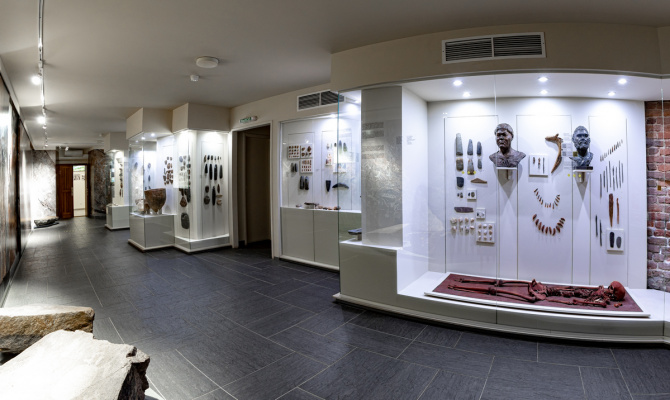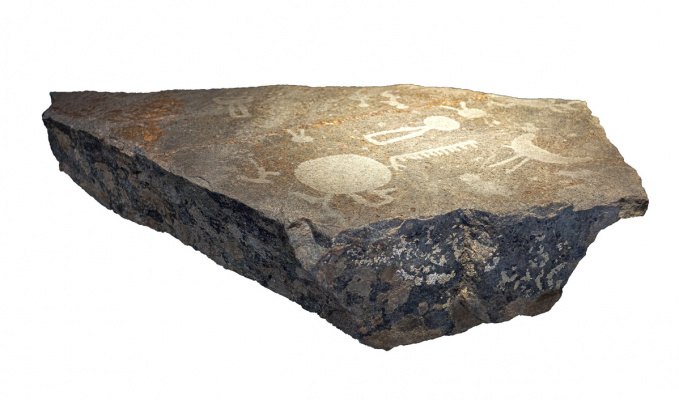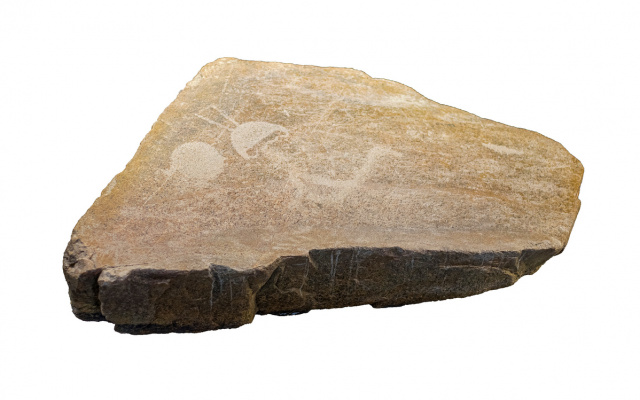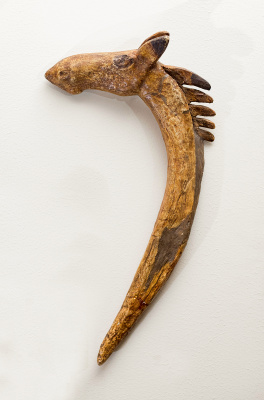 In this exposition the materials of the archeological researches, such as: inventory of the most ancient site in Karelia, tools from stone workshops, restored Neolithic vessels, cult objects and amulets from the burials of the famous Deer islands’ burial ground, unique artifacts – granite slabs with mysterious petroglyphs from the east bank of the Onega Lake are exposed.
In this exposition the materials of the archeological researches, such as: inventory of the most ancient site in Karelia, tools from stone workshops, restored Neolithic vessels, cult objects and amulets from the burials of the famous Deer islands’ burial ground, unique artifacts – granite slabs with mysterious petroglyphs from the east bank of the Onega Lake are exposed.
The burial ground on the South Deer Island of the Onega Lake (VI century BC) – the largest and unique burial stone of Mesolithic period in Europe was explored in 1936-1938 by archaeologist V.I. Ravdonikas. During the excavations 177 burials were found, in which bone remains, original hunting and fishing tools, jewelry and religious objects made of stone, bone and horn (7132 items) were preserved.
The Mesolithic period on the territory of Karelia dates back to the VII-V millennium BC. Nowadays there are more than 300 Mesolithic short-term sites, long-term settlements with the remains of semi-dugout dwelling, workshops for the extraction of stone raw materials and the manufacture of tools have been discovered. The main finds are products and production wastes made of stone. In the Mesolithic era, the main stone industries were mastered - quartz, slate, flint. The Main occupations were taiga hunting and lake fishing.
The Neolithic period on the territory of Karelia dates back to the V–III millennium BC.
Mastering the production of ceramics, improving the flint and shale industries were the main steps in technological progress during this period. The Neolithic marked a sharp increase in the number of collectives, the development of social relations. In Karelia, archaeological cultures with sporen, syaryasniyemi I, pitted-combed, and combed-pitted ceramics stand out.
The era of early metal (the beginning of III - the middle of the I millennium BC) includes two periods - the Eneolithic and the Bronze Age and is associated with the beginning of the production of non-ferrous metals. Man mastered the processing of copper and the production of bronze. The Eneolithic are monuments with rhomboid and asbestos ceramics, the Bronze Age - with reticulated ceramics. Large human groups lived in large dwellings - semi-dugouts. The basis of the economy was hunting for forest and sea animals, fishing. Tribes with reticulated ceramics came to Karelia from the south-east.





